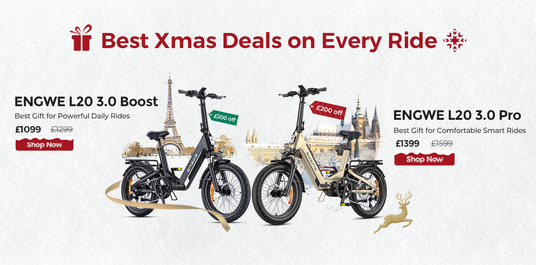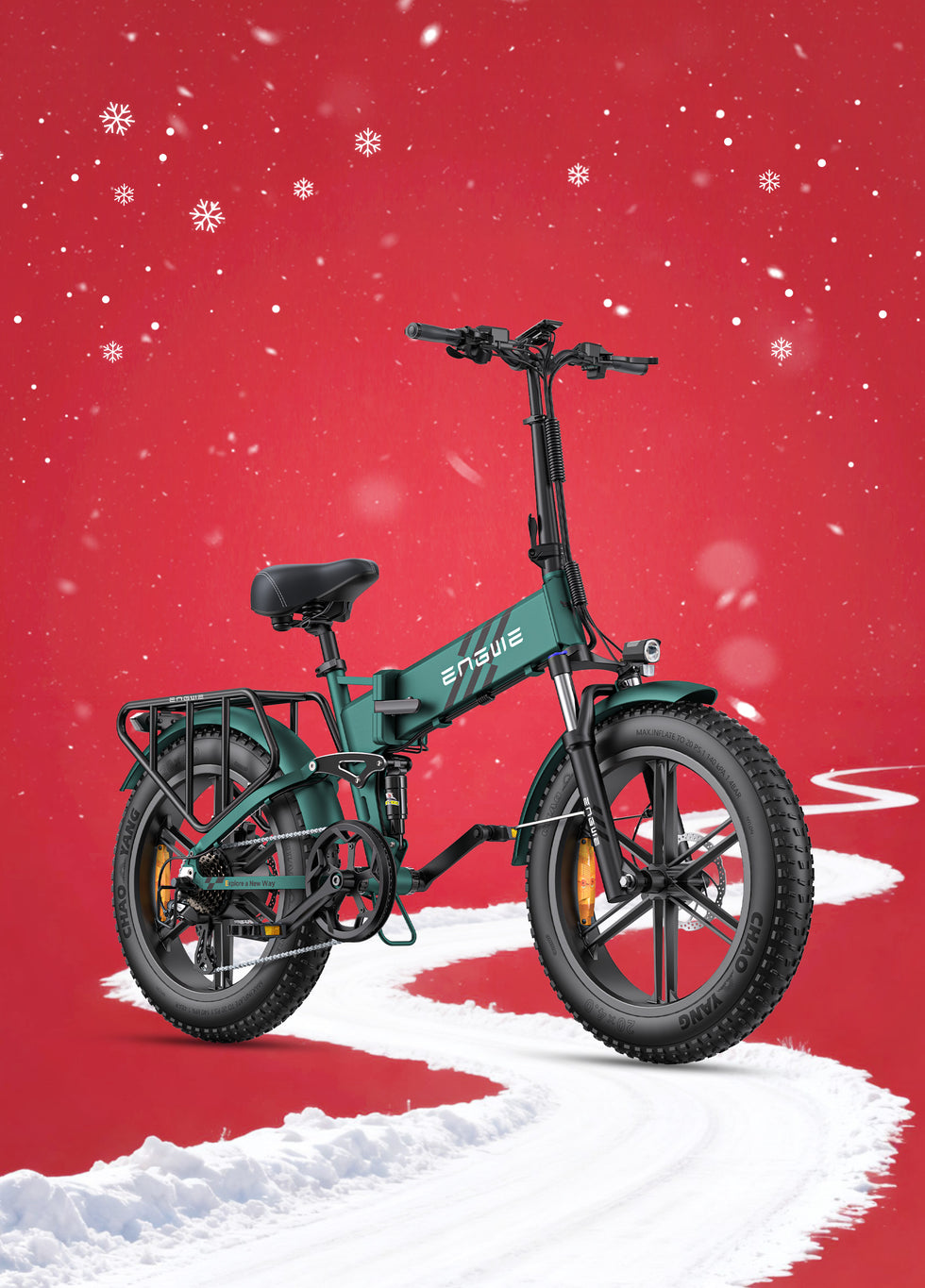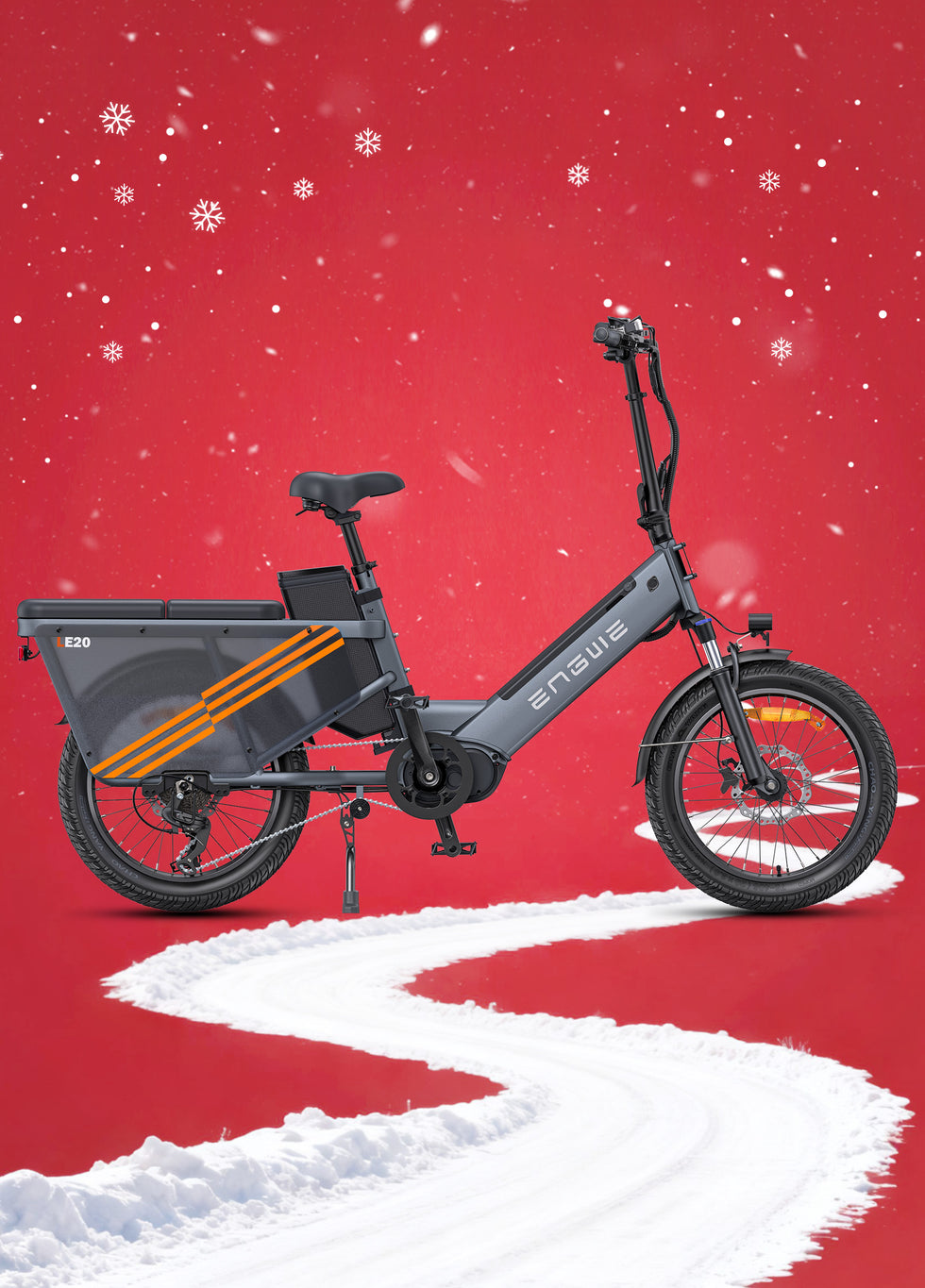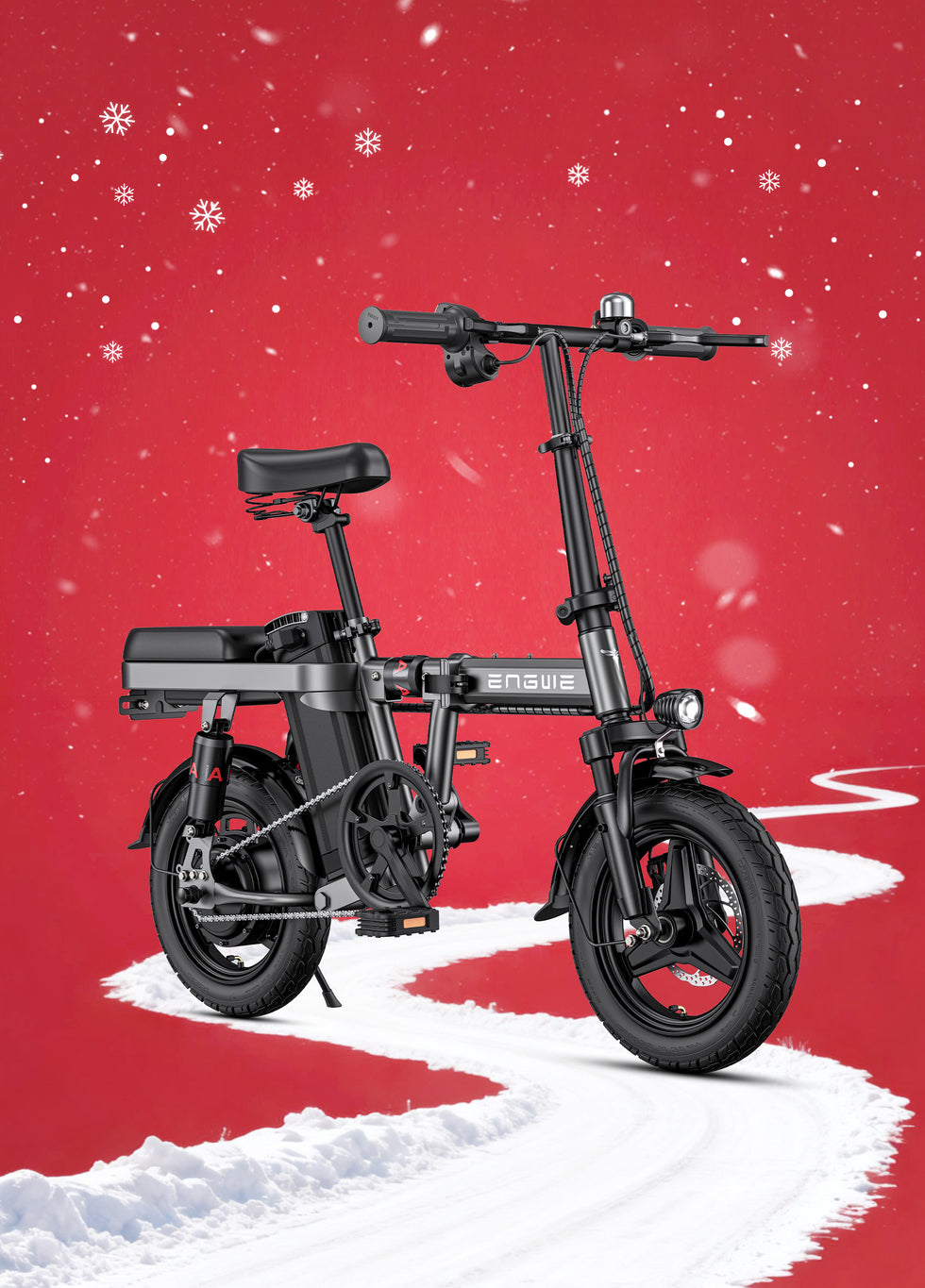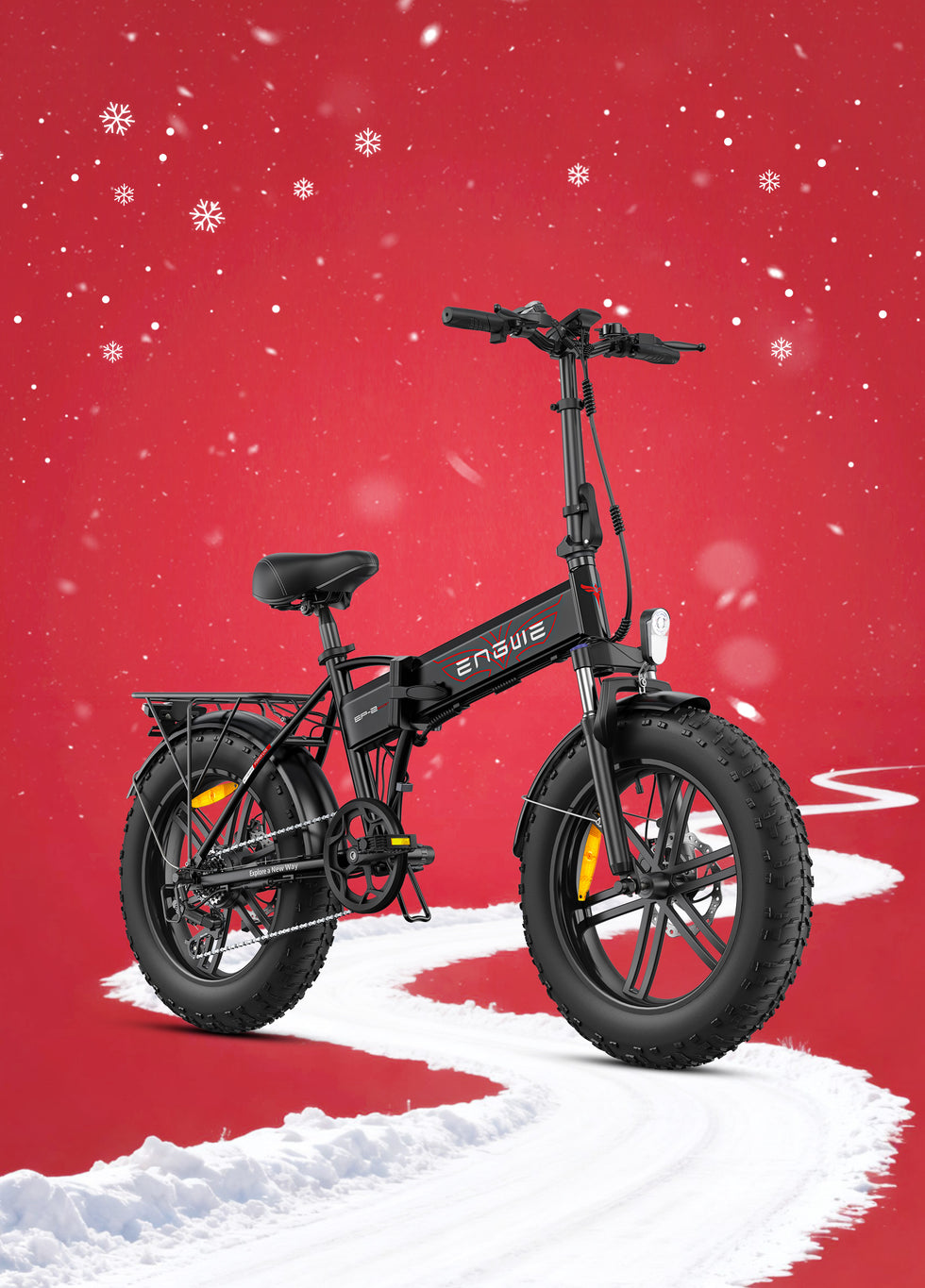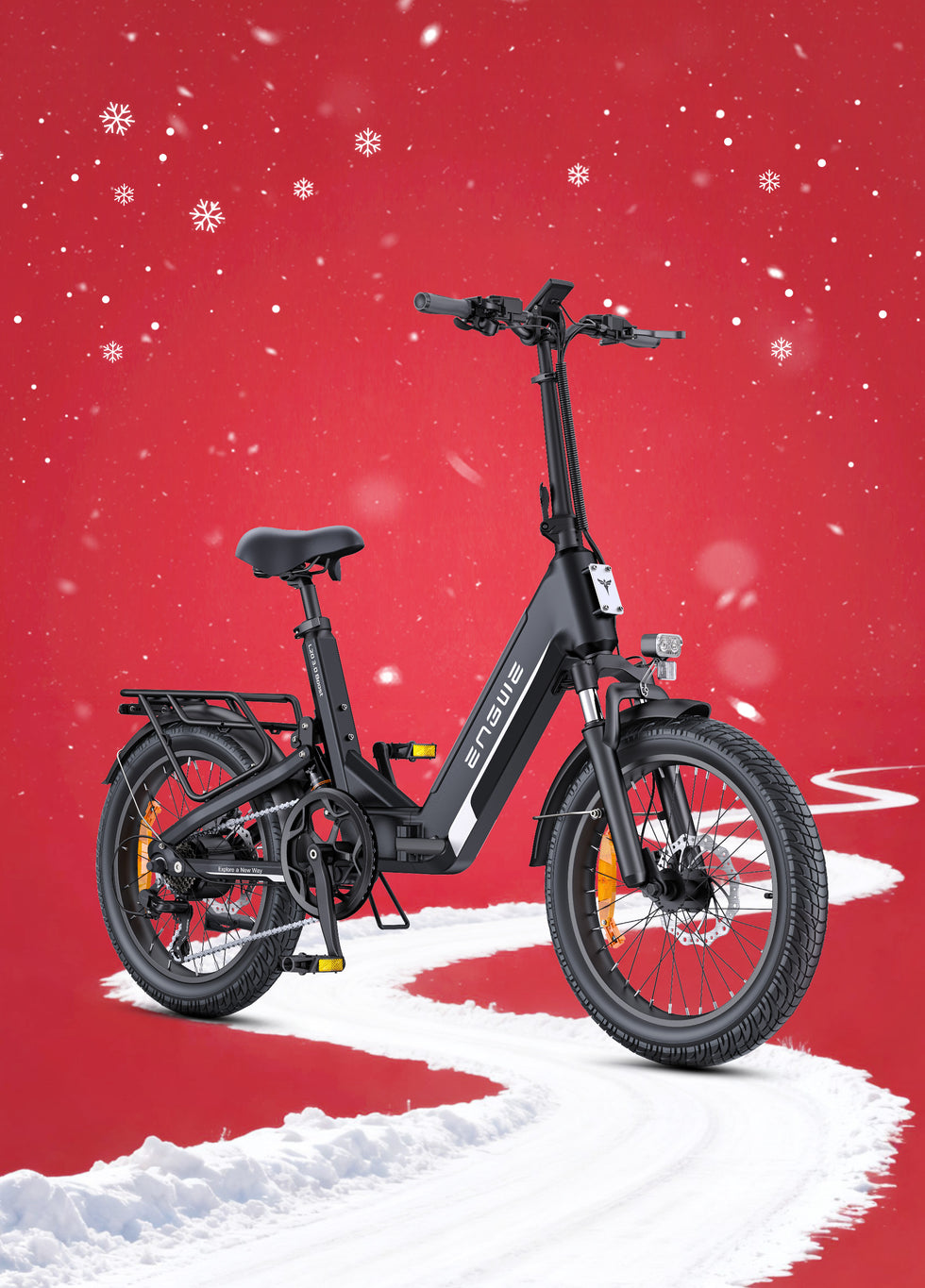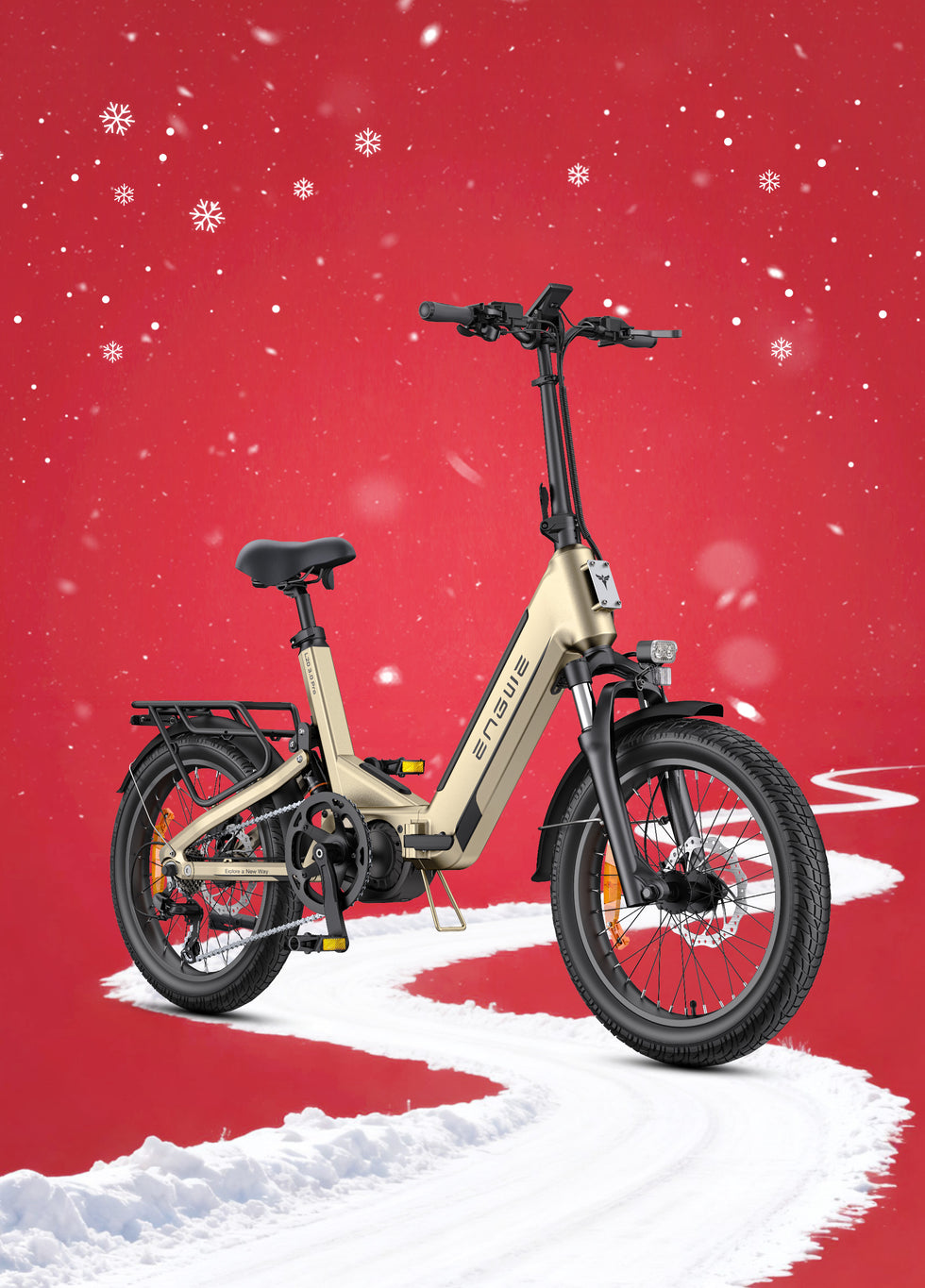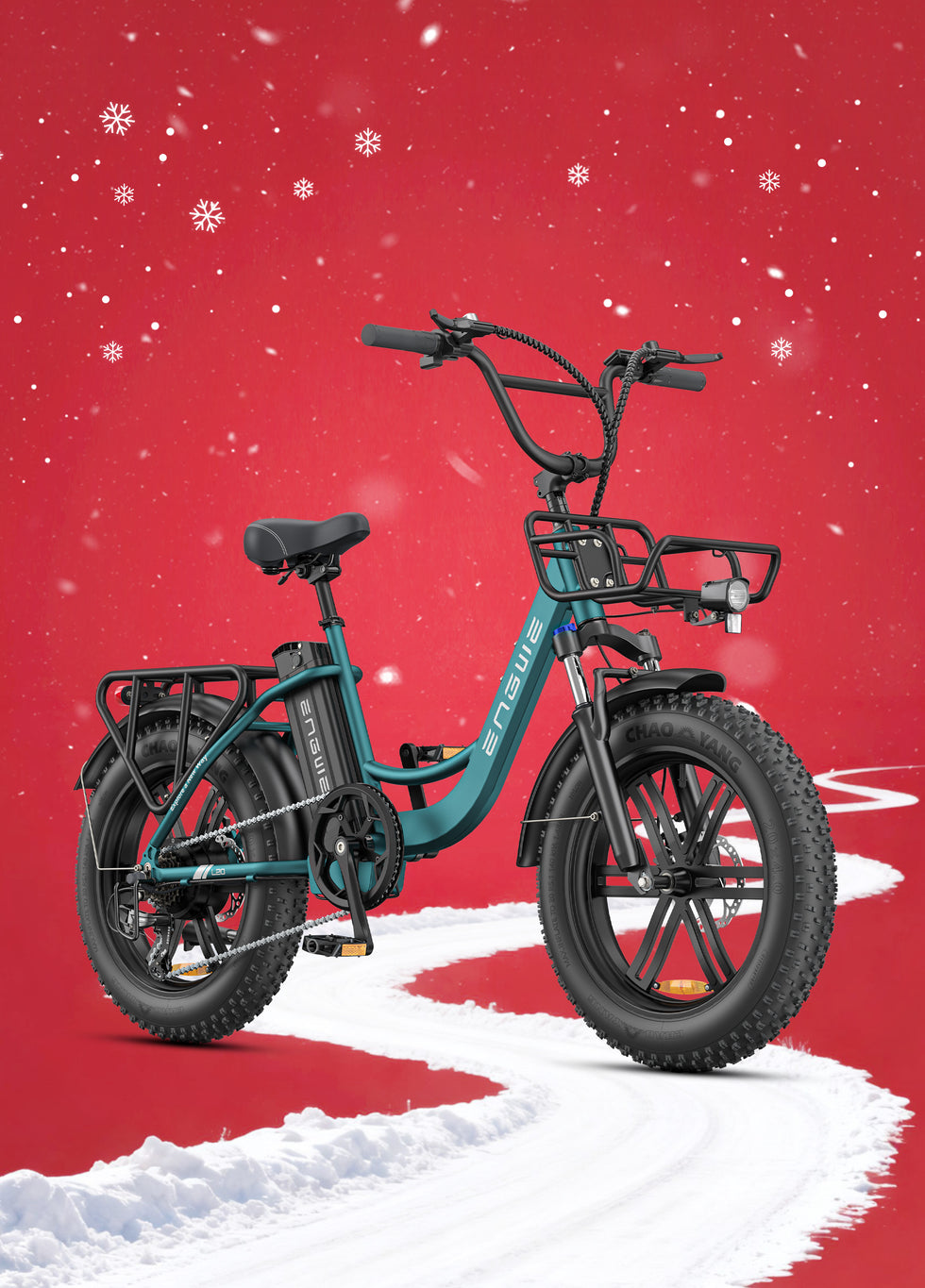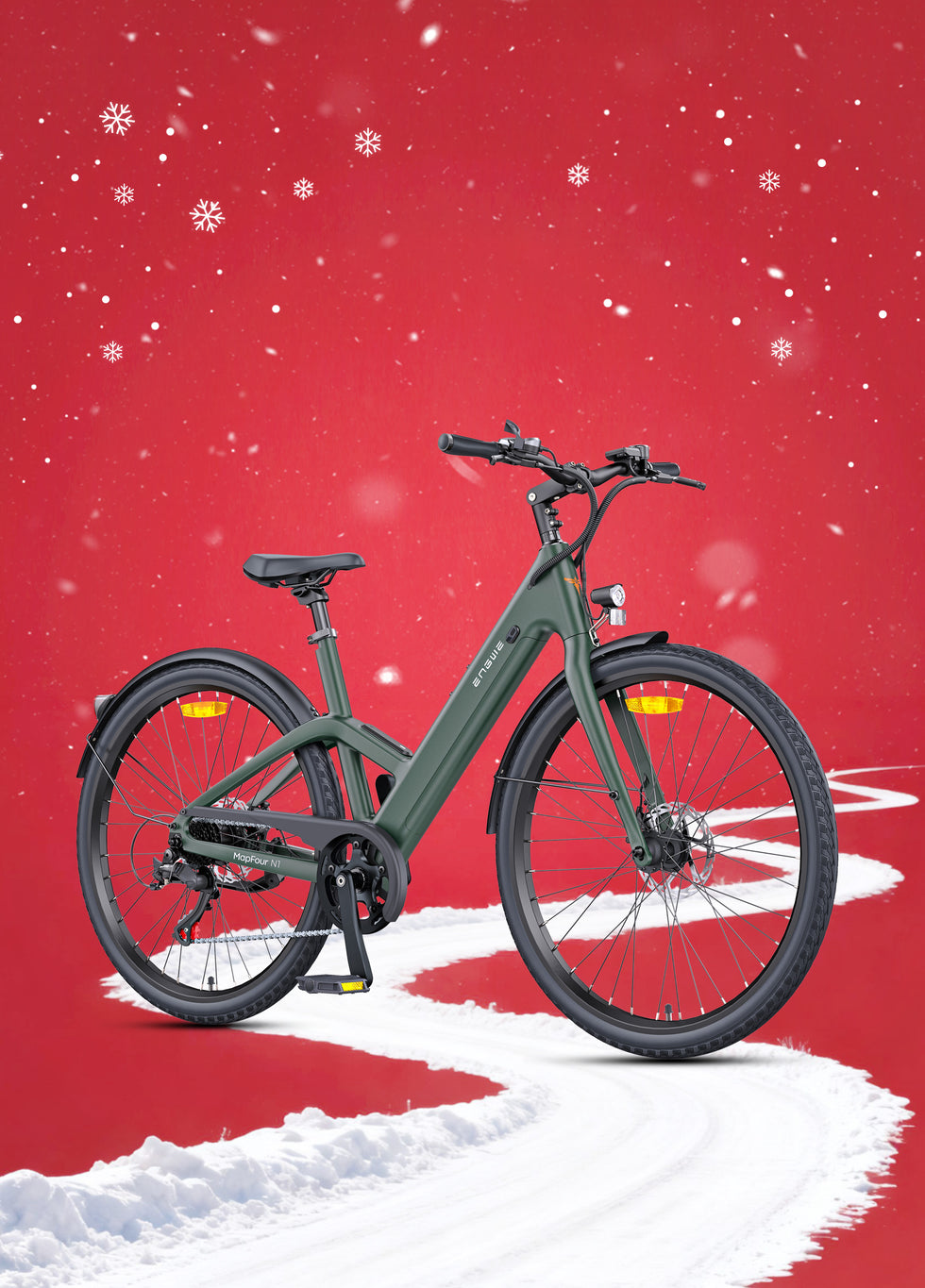Electric bikes have changed the way city dwellers and weekend warriors commute, offering a fast, clean alternative to conventional transportation options. However, while this exciting new technology offers a fresh and original landscape of rules and regulations, for some brand-new riders to technology, with traditional riders finding it all a bit unclear. So what is a "street legal e-bike"? Are you possibly walking into fines or penalties simply due to ignorance? This guide is attempting to do away with that confusion. We will tell you about the exact requirements for UK law and guide you on how to select the perfect model for your needs, answering those burning questions so that every single ride can be both safe and fun – and completely legal.
What do Electric Bikes have to do to be Road Legal in the UK?
With road-legal electric bikes being categorised fittingly in the UK as an 'Electrically Assisted Pedal Cycle' (EAPC), the bike must comply with an explicit set of government-mandated regulations to fit this label. But if an e-bike can't tick all the boxes, it is classified as a moped or motorcycle from a legal point of view and must be registered, taxed, driven with a license, and insured.
The important criteria to be considered an EAPC and the requirements e-bikes must meet:
Maximum Motor Power:
The electric bike's motor can have a maximum continuous power output of 250 watts.
Limited Speed:
The bike can provide electrical assistance only up to 15.5 mph (25 km/h). Now, you can certainly pedal the bike faster than that, but after this speed, the motor stops providing assistance.
Pedal Assist System:
The motor activates only when the rider is pedalling. This means that an EAPC cannot be propelled by a motor alone in a ‘twist-and-go’ configuration, with the exception of a start-up assist system which is limited to 6 km/h (3.7 mph).
Age:
For riders to ride an EAPC, they must be at least 14 years of age.
Manufacturer’s Nameplate:
All EAPCs must be furnished with a plate or sticker that clearly shows the name of the manufacturer, the motor’s power output, and the motor’s cutoff speed. An additional source of confusion for people looking at EAPCs are the battery capacities, for example, ‘250W 48V’. The 250W simply denotes how much power the motor can provide to the rider. The 48V measures how much electrical potential the battery can hold. The bike uses that potential difference to deliver its 250W to the rider. This means that it can deliver its power and provide a smooth ride with more power, especially when passing through a hill. The main aim of the EAPC definition is to limit the power output of the bike.
EAPC vs. Non-Compliant EAPC:
A critical legal line. Some e-bikes are legally distinct from an EAPC. These bikes may have motors above 250W and are often called Speed-Pedelecs. These e-bikes require proper registration and are subject to various regulations.
What defines a non-compliant e-bike?
Abundance of power:
Many e-bikes have motors with power above 250W.
Assistance After 15.5 mph:
The motor helps you go beyond the standard cut-off at 25 km/h.
Full-Speed Throttle:
You can easily ride on full throttle without pedalling.
The new requirements are as follows: If an electric bike has any one of these features, it's considered a moped (or light motorcycle) and would have to be registered. To ride one on public roads in the UK you must:
Register it with the DVLA:
It should have a vehicle registration certificate (V5C) and show a rear number plate.
Have a Driving Licence:
You need to have the right category on your driving licence, which is generally AM or A1 (depending on the power).
Have Insurance:
You have to get insurance, which is the minimum legal requirement and 3rd party.
Vehicle tax:
The bike is subject to an annual vehicle tax.
Helmet:
You must wear a motorcycle helmet which meets UK safety standards.
If you are caught riding a non-compliant e-bike under these circumstances, you could receive fines and points on your driving license or even have your bike confiscated. As a result, if you wish to ride a bike as an ordinary bicycle, when buying a bike, be sure the model conforms to EAPC standards.
Street Legal E-Bike Buyers Guide
Choosing an EAPC means more than just making sure that it is lawful. Sure, you want a bicycle, but… which one is perfect for your lifestyle and journey type, and where is comfort involved in riding? In summary, here is my advice.
Type of E-Bike:
Velocity/Hybrid E-Bikes:
These are ideal to commute in the city and along bike paths for fast-friendly rides. Built-in lights and mudguards, front racks or rear pannier racks give them a functional edge over the more sporty road bikes - they also usually offer a comfortable riding position while still being nimble around town.
Folding e-bikes:
Ideal for those with little space who need to take public transport. They collapse down into a small form factor to slide in and out of storage.
Electric Mountain Bikes (e-MTB):
Suited for riders who prefer off-road trails, the e-MTB is designed with strong structures and reinforced suspension in combination with knobbly tires to guarantee a hefty load traction with the ground. Both are totally capable on the road, but their specification is geared towards difficult terrain.
Electric Road Bikes:
Built for speed and high-mileage road cycling on paved roads, the Electric Road Bike is lightweight and aerodynamic. The help is designed to be unobtrusive but apparent on climbs and into headwinds.
Motor and Battery System:
Location of the Motors:
Hub motors (either in the front or rear wheel) are generally seen and cheap.
Mid-drive motor (located in the centre of the bike frame where the pedals are) Better weight distribution and a more natural-feeling assistance by applying power through the bike's gears.
Battery capacity:
The amount of charge a battery can hold is sometimes measured in watt-hours (Wh) or amp-hours (Ah), and thus impacts how far it will take you. The higher the capacity, the farther you can go on one charge. Take your regular ride length into account and pick a battery which should offer you plenty of headroom.
Brakes, Gears, and Frame:
Brakes:
Mechanical disc brakes offer consistent stopping power, but hydraulic disc brakes are more powerful and easier to use — they're great for long descents or in wet weather when hands are tired. Quality brakes are another safety feature we all need since bikes can reach serious speeds for traditional cycling, but especially for one with a motor.
Gears:
You will need a good range of gears, such as those found in an 8-speed or 9-speed Shimano system. That helps with more than just the steepest of hills on which you're adding power, making sure pedalling is efficient whether on a long stretch of flat.
Frame Material:
Most e-bike frames are aluminium alloy, which strikes a good compromise of strength, weight and cost.
Tyres and Comfort Features:
TYRES:
The size of the tyre has an impact on comfort and performance. Wide, plus fatty tires (at least 4 inches) deliver great softness and grip in a range of surfaces but could be slower on road. Slim commuter tyres are faster and more efficient on roads. There are different opinions on the need for puncture-resistant tires, but for me, they are a must-have.
Suspension:
Front suspension forks help absorb lumps and bumps in the road, making your journey a more comfortable one. Full-suspension (front and rear) is the ultimately comfortable option, for off-road or very poor road surfaces.
Contact Points:
A comfortable saddle, ergonomic handlebar grips and an adjustable riding position are key to enjoying your riding, especially if you want to go on longer rides.
Top-quality Brand: Great for Power and Versatility
If you want to enjoy stiff bike design as well as innovative features, then there are brands who push the boundaries of innovation yet maintain a level of separation from compliance. Engwe is one of those brands, known for creating fast and full-featured e-bikes.
The Engwe Engine Pro 2.0 is an all-out machine designed for both weekend adventurers and city commuters alike through any terrain. Designed as a rugged wilderness companion, the clever folding design of this model also makes it eminently useful. It has high torque motor emanating 75 Nm of power and yes, it does comply with the 250W power limit required to be street legal. The top-of-the-line torque sensor guarantees smooth, instant output of power, doing away with the lag when starting. A massive 16Ah lithium-ion battery is fitted and provides up to 110km of range in pedal-assist mode, so you should be able to leave that range anxiety firmly in the past. Since rider comfort is key, it comes with a full-suspension system to absorb big bumps and wide 20x4.0-inch all-terrain tyres. Responsive hydraulic disc brakes also improve safety, along with a dependable Shimano 8-speed drivetrain — great for that fast and accurate shifting. The complete package includes a stable, quick-folding 6061 aluminium alloy frame that can fold in three steps, for convenient parking and easy stowing or backing into the back of your car. A confluence of power, comfort and convenience: the Engine Pro 2.0 competes with a bright LCD display, lights integrated throughout the bike, and a beefy rear rack allowing riders to haul along more gear than usual.


Answers to Your Top 5 Questions
There are so many questions to ask and navigate the world of e-bikes. Answering five of the most common concerns in detail.
Is a license or insurance required for a UK street-legal e-bike?
No. Legally, as long as the electric bike conforms to all of the EAPC requirements (250W motor maximum power output, 15.5 mph) then your e-bike is a bicycle. This implies that you will not have to possess a driving permit, vehicle protection or driver's assessment purposes. It can be ridden wherever you would typically ride a bicycle – on the road, in cycle lanes etc.
Is a Throttle Legal on an E-bike?
This is a major point of confusion. You can have throttling, but only to a minimal effect. A throttle can only give an "assist" of up to 6 km/h (3.7 mph) before you pedal, designed to assist in launching from a stop (as when you're starting off at a traffic light). The bike is pedal-assisted up to 15.5mph. Anything that works above this speed or can propel the bike without pedalling at higher speeds renders an e-bike illegal for use on public roads without being registered and insured as a moped, with all the shenanigans that implies.
IF I RIDE A NON-COMPLIANT E-BIKE WHAT HAPPENS?
The consequences can be serious. If you are caught by the police riding an e-bike that doesn't meet EAPC limits (e.g., it goes faster than 15.5 mph or is more powerful than 250W) then they could charge you with a number of offences. This could be, unlicensed riding, uninsured riding, and non-registered vehicles. These may include very large fines, penalty points on your driving license (yes, even if you weren't riding a car), and the police could confiscate and possibly crush your e-bike.
Is it Safe to Ride an Electric Bike in the Rain?
In short, yes; most modern electric bikes are made to be partially water-resistant and can easily be ridden in the rain. Motor, battery, and controller are sealed from water. But it's a good idea to verify the bike's IP (Ingress Protection) rating, which will tell you how water-resistant that bike is. Although these electricals can withstand rain and puddles, they are not entirely submersible under water. It would also, after a wet ride, be good form to wipe the bike down and in particular look after the chain and stave off corrosion around electrical contact points.
How do I get more range out of the battery in my e-bike?
The distance covered by the electric vehicle on a single charge varies with multiple factors. Here are some effective tips:
Opt For a Lower Assist Level:
The more assistance you use, the more power you drain. Stay on the lower PAS (Pedal Assist System) levels and you will greatly be extending your range.
Keep Tyre Pressures In Check:
Soft tyres are inefficient due to their increased rolling resistance, making you and the motor work harder. Keep tires inflated to the recommended pressure.
Practice even pressure on the pedals:
No harsh acceleration, no sudden brakes. A smooth riding style is more energy-efficient. Shift smoothly and use the gears to maintain a consistent cadence.
Trim the fat:
The heavier the bike is, the more energy consumed. Avoid carrying unnecessary items.
Beware Strong Headwinds and Steep Hills:
Try to avoid routes with too many hills or headwinds, because the constant fighting makes the battery die faster.

Rules of the Road for Safe and Legal E-Bike Riding
But even if you choose the appropriate bike and understand the law, you should also practice safe riding habits in order to protect yourself and others.
Be Visible:
Turn your lights on, even during the day. Dress in light or reflective clothing, especially when riding at dusk, dawn or in dark hours where you might not be easily seen by motorists and others.
Normal Maintenance:
Check your brakes, tire pressure, and chain consistently. Basic maintenance not only keeps your bike on the road; it could help avoid costly repairs, too. It is important to maintain the bike, keeping battery connections clean and dry.
Obey the Road Rules:
As with a regular bike, you must obey all traffic signals and signs. Indicate early and be aware of your surroundings.
Buy a high-quality lock:
E-bikes are expensive and therefore attractive to thieves. Lock it with a quality D-lock around the frame (and not just the wheel) to something immovable, or with a heavy-duty chain.
Understanding what makes an electric bike street legal, as well as choosing a design that works for you, both give access to a fresh way of convenient, joyful, and empowering means of transport. Remember, to be well-informed, ride responsibly and enjoy your EAPC freedom. Happy riding!
